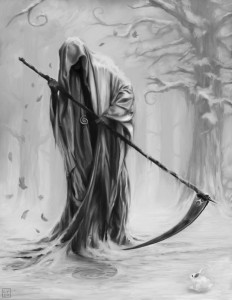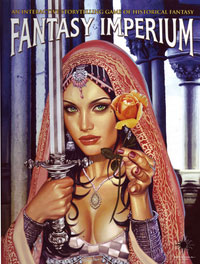 The Seven Steps of Classical Story Structure
The Seven Steps of Classical Story Structure
For more information on advanced storytelling, visit www.Truby.com
Ghost
An event from the past that is haunting the hero. It’s something that is still giving your hero problems. What the ghost does is give you a running start on your story, because it means that there is already some important information that has happened before the script even starts.
1. Problem/Need
The Problem is the difficult situation that the hero faces in the beginning. The hero will be aware of his problem. The Need, which also happens in the beginning of the story, is more subtle and far more important. The need is an internal lack – it’s something missing inside the hero. It’s usually based on an essential weakness that your hero has. The hero will have to overcome that weakness – the hero will have to fulfill that need by the end of the story. The other way to look at Need is that it is whatever your hero has to learn in order to have a better life. So it is very fundamental and its one of the major things that even the best writers fail to have in their scripts, believe it or not.
Inciting Incident
Typically in the beginning of a story, the hero is paralyzed in some way. They have a problem, an internal problem, an internal weakness that they’re not really aware of, so we have an inciting incident – which is an event from the outside that gets your hero to come up with a goal and take action. It gets your hero going in a particular direction – which is to say that it sparks your hero to come up with the desire.
2.Desire
The overall goal that your hero has in the story. That’s really the track that your story will ride down because your audience will identify with that particular goal and if it’s set up properly they’ll want your hero to achieve that goal.
3. Opponent The hero has to come up against some opposition. The opponent is someone that wants generally the same thing as the hero. Someone who will compete with the hero for the same goal, and because they both can’t have the same goal it is going to lead them into direct conflict.
4. Plan
Once your hero has a goal and an opponent, he or she is going to have to come up with a plan. The plan is the set of guidelines that your hero will use in order to overcome your opponent and win. It is what generally determines or shapes the middle of your script. Now with both your hero and opponent going after the same goal, we’re going to have an escalating conflict throughout the middle of the story, which leads us up to the next major step.
5. Battle
The final conflict, where we find out who is going to reach the goal. The battle is obviously a very trying experience, and in going through a battle, a hero will undergo change. If it’s an intense battle, the hero will undergo fundamental change, which means that the hero will have a self-revelation.
6. Self-Revelation
The hero will be revealed to himself. At this point, the hero will learn for the first time who he really is and how to act properly in the world. To put it another way, this is where the hero fulfills his need from the very beginning. So that’s really what completes your story.
7. New Equilibrium
Now once the hero has gone through the battle and has either achieved the goal or lost the goal, we return to a new equilibrium. Things are back to normal. But there is one big difference:
The hero is either at a higher level or a lower level. If the selfrevelation is a positive revelation, the hero will move to a higher level, and we have a sense that the hero will be a better person for the rest of his life. In some way, he’ll be a better person.
On the other hand if the selfrevelation is negative, if what the hero learns about himself is very devastating, the hero can end up at a lower level.
Examples:
Star Wars
Luke’s got a problem here. He’s stuck on a planet about as far away from the action as can be. His need is to be a hero.
What that is, is an inciting event that gives us the goal, the desire. All she does is say, “Help me.” So what his desire line is going to be is to save the princess.
Here’s the opponent. Grand Moff Tarkin and Darth Vader.
Here’s the plan. He’s going to learn the ways of the force.
We’re at the battle.
“Use the force Luke.” The Self-revelation during the battle.
Notice how everything converged at that one point which is the completion of his desire.
Harry Potter and the Sorcerer’s Stone
Problem: Harry is an orphan. Harry lives in a closet under the stairs of his uncle’s house. His cousin bullies him. Everyone treats him with injustice and cruelty.
Need: To prove himself.
Inciting Event: Harry receives a letter from Hogwarts, a school of witchcraft and wizardry. Harry’s uncle tries to stop him from getting the letter.
Desire: To keep Professor Snape from stealing the Sorcerer’s stone.
Series Desire: To defeat Voldemort.
Plan: To find out where the stone is hidden and protect it.
Battle: Harry battles Professor Quirrell, who is revealed to be the villain.
Self-Revelation: His parents truly loved him.




 ENTER YOUR EMAIL INTO THE FORM BELOW:
ENTER YOUR EMAIL INTO THE FORM BELOW:
